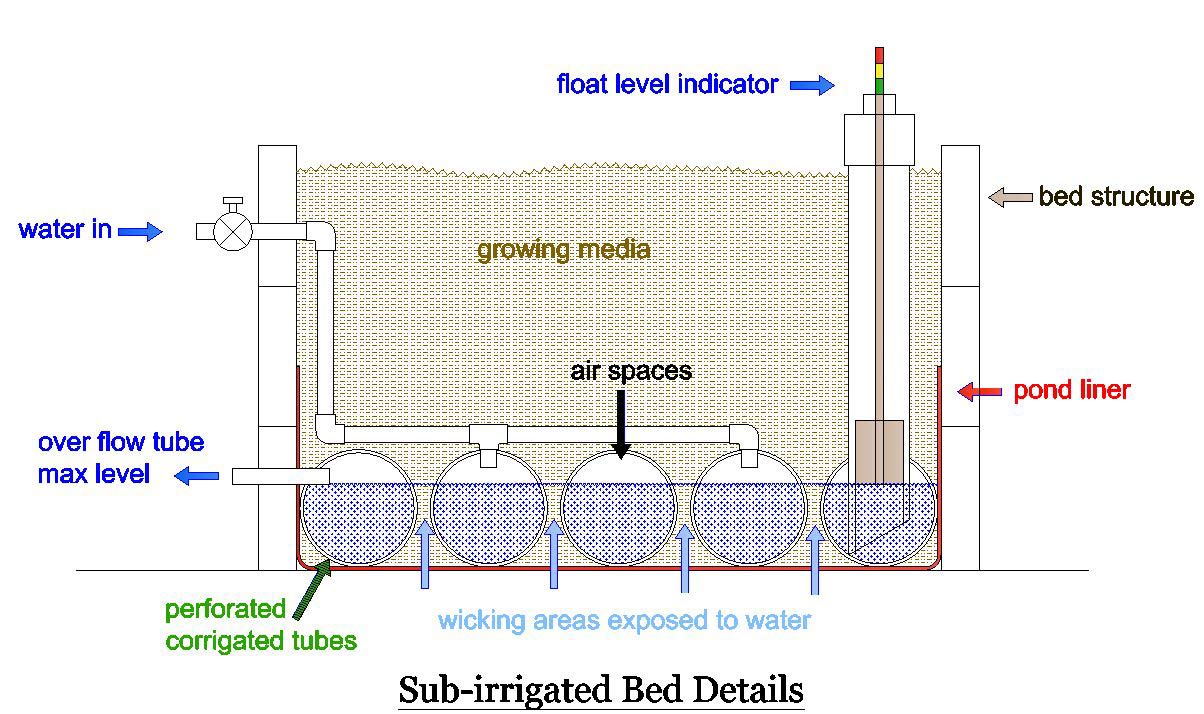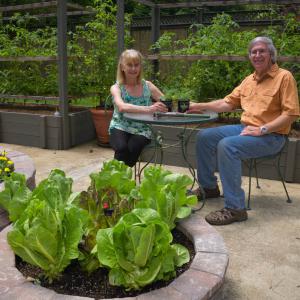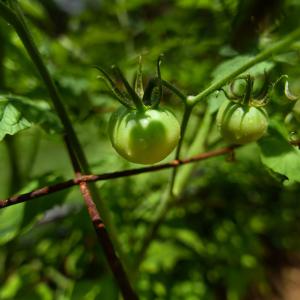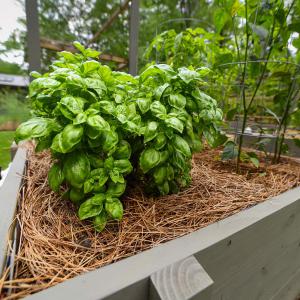The Big Experiment
Engineer designs sub-irrigated planter
Story by Keri Collins Lewis • Photos by Kevin Hudson
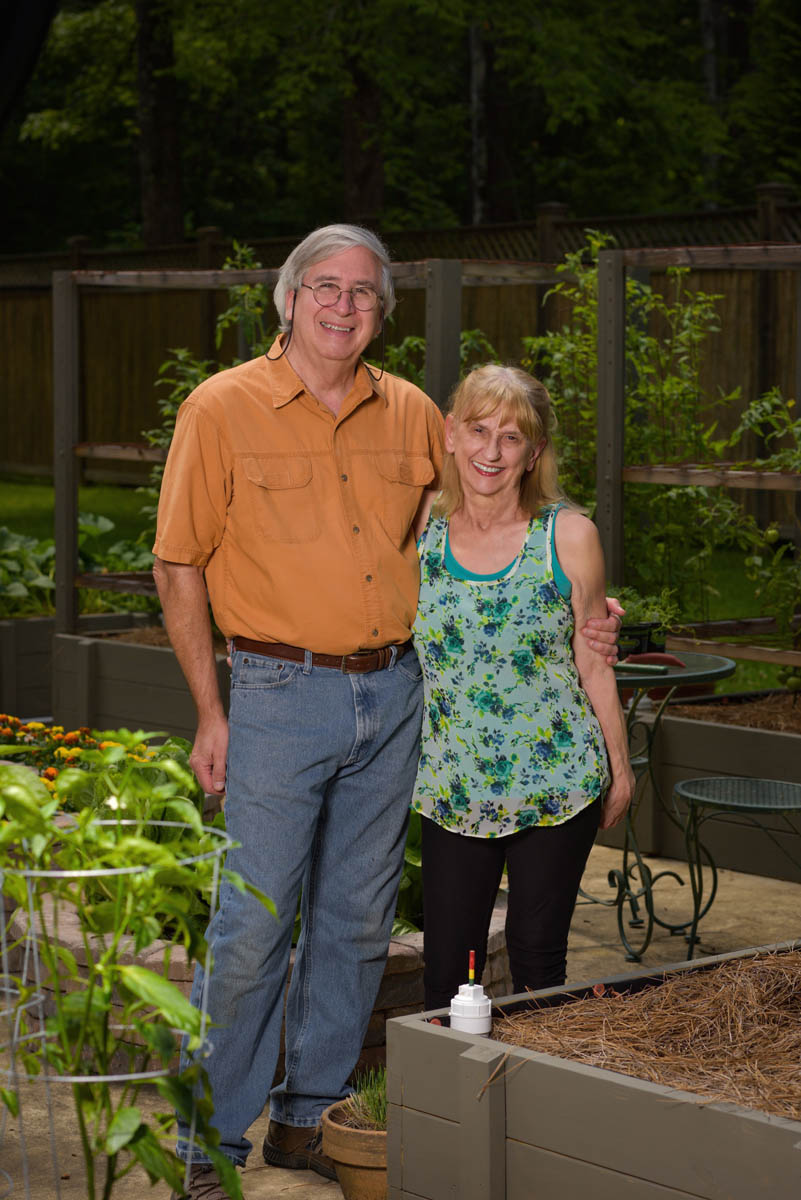
The answer would have discouraged most people when Mike Boyles asked Mississippi State University Extension Service agent Jim McAdory about building a permanent, subirrigated planter on a concrete slab.
“Jim said he didn’t know of anyone who did that,” Boyles recalls. “That’s just the kind of thing I like to hear! Being an engineer, I like a challenge.”
Boyles, who earned his degree from MSU in 1970, built a successful career at Taylor Machine Works, retired as director of engineering, and loves innovation. Based on his gardening experience, he knew consistent water contributes to overall plant health and high-quality produce.
While similar to the commercially made, portable containers called Earth Boxes, Boyles intended his structures to be much larger and longer-lived. He applied his design skills to creating several large planters that would water plants from the bottom and could also be drained during excessive rainfall.
From determining the best layout for his site to finding a growing medium that would properly wick water from the planters’ bases, Boyles approached each part of the project with a mixture of research, Extension advice, and a willingness to experiment.
“Our Extension agent is a great sounding board,” Boyles shares. “Jim is someone you can talk to, and, if he doesn’t know the answer, he says, ‘I’ll find out for you.’ Extension’s work is critical to me. They really want to help.”
Boyles started his planter project in the fall of 2019 and planted in early 2020. When the novel coronavirus hit, the Winston County Extension office had to close, but Jim remained available.
“The pandemic hasn’t interfered with our interaction,” Boyles explains. “He’s always willing to meet, carefully social-distancing and wearing a mask. He helped me with my soil samples and helped me troubleshoot pest and disease problems throughout the growing season.”
After determining his planters needed a mixture of 85 percent peat, 10 percent perlite, and 5 percent vermiculite, Boyles added pelletized lime to this growing medium, based on the results of his initial soil sample.
His potatoes, which like acidic soil, thrived. He also planted cucumbers, eggplants, tomatoes, basil, and more.
“The real advantage of this type planter is controlling the moisture level the plants see,” he explains. “These beds provide a consistent moisture level with very little effort from the gardener. They have additional benefits of reducing water waste and not exposing the plants to being watered from the top, which may increase blight issues.
“On this front, these beds performed as well as or better than I expected. The only thing I had to do was open a valve and add a couple of gallons of water to the beds every 3 or 4 days. It’s very forgiving if you miss a few days,” he adds.
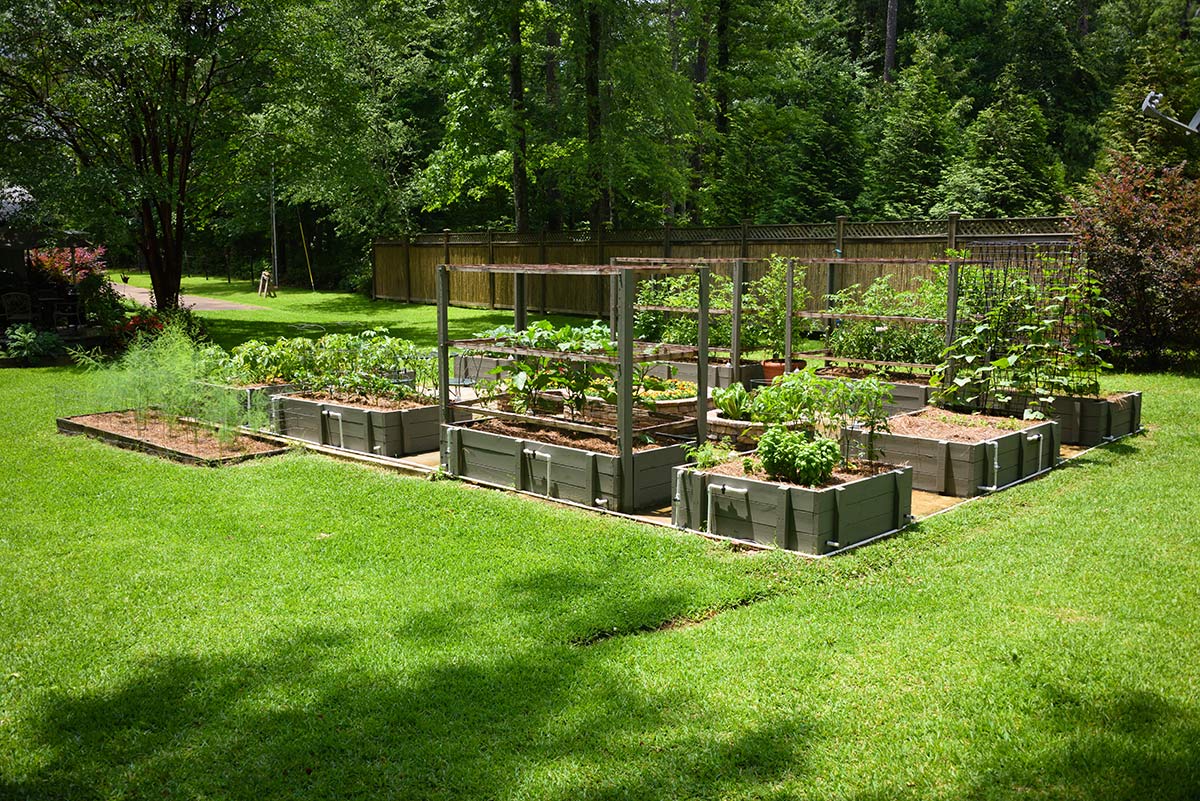
At the end of the growing season, which included a persistent aphid infestation, hand-pollinating squash with a cotton swab, and hand-to-hand combat with squash bugs using a pair of electrical pliers, Boyles deems his first round in the sub-irrigated beds a “moderate success.”
“I’m going to get soil samples from all of my beds. There’s more work to do. I made real progress and it’s going to get better,” he says, exemplifying the engineering design process of continuous improvement.
When asked about his favorite aspect of gardening, Boyles’s answer is no surprise.
“Solving problems. That’s what I’ve done all my life. Trying new things. It was fun for me to look at new ways of doing things,” he concludes. “I like to figure out why it’s not as it could be and how I can improve it.”
As for his wife, Mary, tending flowers in the garden was an enjoyable experience.
“I love the fountain he installed,” she says. “I told him I wouldn’t work out there if I didn’t have a fountain’s soothing sounds.”
One of the challenges facing every raised bed gardener is ensuring the plants get the proper amount of water. Most gardeners who don’t water by hand use either drip irrigation or sprinklers installed on the bed surface. Boyles’ experience shows that having a system that uniformly waters the plants without splashing water on them is difficult. (Reduced splashing minimizes disease issues like blight.)
Another issue is when and how much water to apply. When Boyles tried to make sure the bed was adequately watered, he typically had considerable water runoff, so he conceived subirrigated beds to address these issues. The governing principle is to maintain a reservoir of water at the bed bottom and use a wicking media that draws the water upward through the bed. This results in a more uniform and consistent moisture level through the whole bed. Water is added directly to this reservoir and controlled to a specific depth. Excess water, like rain, flows out a depth control tube to maintain the amount of media that is exposed to the water. This prevents the beds becoming too wet and allows aeration to take place.
Advantages:
- Consistent moisture level available to plants
- Reduced water usage
- Water from the bottom potentially reduces likelihood of disease and some pests
- Reduced time and effort by gardener to water plants correctly
Disadvantages:
- Increased cost of building the bed
- Growing media that wicks well is mostly peat moss
- requires addition of lime to adjust Ph
- requires addition of proper nutrients to feed the plants
- Some plants may not like the moisture levels produced by these beds
